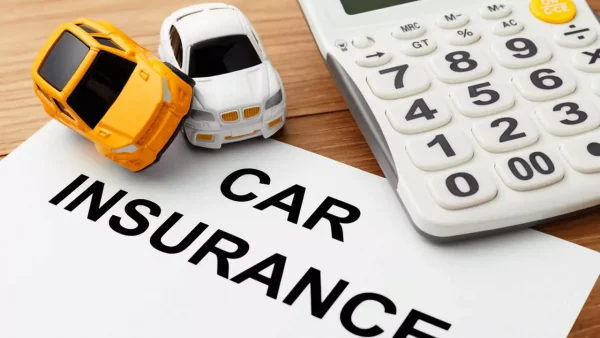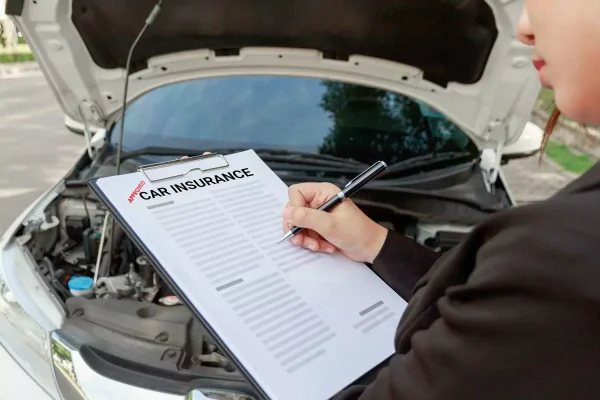The Average Price Of Car Insurance In The USA In 2025

Car insurance rates in 2025 vary widely, influenced by factors like driving history, age, and location. While the average annual premium is $2,068, drivers can save by shopping around and considering key elements like coverage and driving behavior.
Key Takeaway:
In 2025, car insurance costs vary widely based on factors like driving record, credit score, and coverage levels. Young drivers and those with violations face higher rates, while low-mileage and senior drivers can find savings.
Contents
How Much Is Car Insurance?
The national average cost of car insurance is $2,068 per year. However, rates fluctuate based on location, vehicle type, credit score, and driving history. USAA offers the lowest average rate at $1,335 annually, but it is only available to military families. Erie follows with $1,532 per year, and Auto-Owners at $1,619. Conversely, Allstate has the highest sample rate at $3,374.
Average Annual Car Insurance Rates By Company
Here’s how the top insurers compare in average annual premiums:
| COMPANY | NATIONAL AVERAGE RATE* |
| USAA | $1,335 |
| Erie | $1,532 |
| Auto-Owners | $1,619 |
| Nationwide | $1,621 |
| Geico | $1,778 |
| Progressive | $1,848 |
| American Family | $2,170 |
| Farmers | $3,253 |
| Allstate | $3,374 |
| Average |
What Affects Car Insurance Rates?
Several key factors influence insurance costs:
– Age:Young drivers pay the most, while senior drivers often get lower rates.
– Driving Record: Accidents, speeding tickets, and DUIs significantly increase premiums.
– Location: High-crime or high-accident areas lead to higher rates.
– Credit Score: Drivers with good credit receive better pricing in states where insurers consider credit-based insurance scores.
– Vehicle Type: Expensive cars and those with high repair costs tend to have higher insurance rates.
– Coverage Level: Minimum coverage is cheaper but may not offer adequate protection.
– Annual Mileage: Low-mileage drivers often pay less.
State-By-State Car Insurance Costs
Car insurance costs differ significantly based on where you live.
| STATE | AVERAGE ANNUAL CAR INSURANCE RATE |
| Alabama | $1,354 |
| Alaska | $1,294 |
| Arizona | $1,626 |
| Arkansas | $1,814 |
| California | $1,782 |
| Colorado | $1,663 |
| Connecticut | $1,567 |
| Delaware | $2,231 |
| Florida | $2,553 |
| Georgia | $1,432 |
| Hawaii | $1,241 |
| Idaho | $992 |
| Illinois | $1,266 |
| Indiana | $1,190 |
| Iowa | $1,215 |
| Kansas | $1,486 |
| Kentucky | $2,104 |
| Louisiana | $2,734 |
| Maine | $949 |
| Maryland | $1,468 |
| Massachusetts | $1,399 |
| Michigan | $1,920 |
| Minnesota | $1,460 |
| Mississippi | $1,505 |
| Missouri | $2,055 |
| Montana | $1,525 |
| Nebraska | $1,569 |
| Nevada | $1,913 |
| New Hampshire | $1,530 |
| New Jersey | $1,706 |
| New Mexico | $1,530 |
| New York | $1,808 |
| North Carolina | $1,165 |
| North Dakota | $1,300 |
| Ohio | $1,083 |
| Oklahoma | $1,638 |
| Oregon | $1,281 |
| Pennsylvania | $1,395 |
| Rhode Island | $1,831 |
| South Carolina | $1,813 |
| South Dakota | $1,813 |
| Tennessee | $1,264 |
| Texas | $1,716 |
| Utah | $1,407 |
| Vermont | $1,053 |
| Oklahoma | $1,638 |
| Oregon | $1,281 |
| Pennsylvania | $1,395 |
| Rhode Island | $1,831 |
| South Carolina | $1,813 |
| South Dakota | $1,813 |
| Tennessee | $1,264 |
| Texas | $1,716 |
| Utah | $1,407 |
| Vermont | $1,053 |
Car Insurance Rates For Different Driving Records
Good Drivers
Drivers with a clean record enjoy some of the most affordable car insurance rates. The national average cost for good drivers is $2,068 per year, but several insurers offer significantly lower premiums.
USAA provides the cheapest rate, coming in 35% below the national average—a top choice for eligible military members and their families. For those who don’t qualify, Erie Insurance offers competitive pricing, with an average annual premium 26% lower than the national average.
Another strong contender is Auto-Owners Insurance, which delivers rates approximately 22% below the national average. These companies consistently rank among the best for affordability, customer satisfaction, and policy options for safe drivers.
| Company | Average Rate for Good Drivers |
| USAA | $1,335 |
| Erie | $1,532 |
| Auto-Owners | $1,619 |
| Nationwide | $1,621 |
| Geico | $1,778 |
| Progressive | $1,848 |
| Average | |
| State Farm | $2,150 |
| American Family | $2,170 |
| Farmers | $3,253 |
| Allstate | $3,374 |
One Speeding Ticket
A single speeding ticket can significantly impact your car insurance premiums. On average, drivers with one speeding violation pay $2,503 per year for coverage—a noticeable increase from the rates for those with a clean record.
However, not all insurers penalize speeding tickets the same way. Our analysis reveals that USAA offers the most affordable rate, coming in 35% below the national average—but it’s only available to military members and their families. For non-military drivers, Erie Insurance provides competitive rates, averaging 30% less than the national benchmark. Auto-Owners Insurance also delivers substantial savings, offering rates 23% lower than the national average.
| Company | Average Rate After a Speeding Ticket |
| USAA | $1,623 |
| Erie | $1,765 |
| Auto-Owners | $1,937 |
| Nationwide | $2,032 |
| Geico | $2,299 |
| State Farm | $2,344 |
| Progressive | $2,389 |
| Average | |
| American Family | $2,617 |
| Allstate | $3,864 |
| Farmers | $4,164 |
Drivers With One Accident
A single accident can cause a significant spike in car insurance premiums, making it essential to compare quotes for the best rates. On average, drivers with one at-fault accident pay $2,940 per year for coverage.
While most insurers raise rates after an accident, some offer far more affordable options. USAA provides the lowest sample rate, coming in 35% below the national average—but it’s limited to military members and their families. For broader availability, Erie Insurance offers competitive pricing, with rates averaging 33% lower than the national benchmark. Auto-Owners Insurance also stands out, delivering post-accident rates 24% below the national average.
| Company | Average Rate After One Accident |
| USAA | $1,908 |
| Erie | $1,964 |
| Auto-Owners | $2,246 |
| Nationwide | $2,425 |
| State Farm | $2,526 |
| Geico | $2,781 |
| Progressive | $2,827 |
| Average | |
| American Family | $3,068 |
| Allstate | $4,724 |
| Farmers | $4,926 |
Drivers With One DUI
A DUI conviction can cause a dramatic spike in car insurance costs, making it one of the most expensive violations for drivers. On average, motorists with a DUI pay $3,538 per year for coverage—$1,478 more annually than those with a clean record. This sharp increase highlights the financial impact of a DUI on insurance premiums.
However, rates vary significantly by insurer, making comparison shopping essential. Progressive offers the cheapest average rate, coming in 35% below the national average for drivers with a DUI. USAA and Erie Insurance also provide competitive pricing, with average premiums 28% lower than the national benchmark.
| Company | Average Rate After One DUI |
| Progressive | $2,296 |
| Erie | $2,541 |
| USAA | $2,567 |
| State Farm | $2,762 |
| Auto-Owners | $3,244 |
| Nationwide | $3,281 |
| American Family | $3,300 |
| Average | |
| Geico | $4,323 |
| Allstate | $5,146 |
| Farmers | $5,919 |
Drivers With Poor Credit
A low credit score can significantly impact car insurance rates, often resulting in higher premiums. On average, drivers with poor credit pay $4,381 per year for coverage—$2,286 more annually than those with good credit. This substantial difference highlights how insurers factor in credit history when determining rates.
However, some insurers offer more affordable options for drivers with lower credit scores. Nationwide provides the lowest sample rate, coming in 48% below the national average. Other budget-friendly options include USAA, which offers rates 42% lower than average (for military families), and Geico, with premiums 32% below the national benchmark.
| Company | With Poor Credit | With Fair Credit | With Good Credit |
| Nationwide | $2,268 | $1,852 | $1,593 |
| USAA | $2,521 | $1,597 | $1,342 |
| Geico | $2,878 | $2,135 | $1,813 |
| Progressive | $3,191 | $2,299 | $1,850 |
| Erie | $3,515 | $2,074 | $1,532 |
| American Family | $4,272 | $2,634 | $2,204 |
| Average | | | |
| Auto-Owners | $4,515 | $2,307 | $1,619 |
| Allstate | $5,442 | $4,041 | $3,443 |
| Farmers | $6,070 | $4,062 | $3,359 |
| State Farm | $9,139 | $3,471 | $2,192 |
Teen Drivers
Teen drivers face some of the highest car insurance costs due to their limited experience and higher risk profile. On average, female teen drivers pay $6,410 per year, while male teen drivers pay $7,377 annually—a significant difference compared to older, more experienced motorists.
However, some insurers offer more affordable rates for young drivers. Erie Insurance provides the lowest sample rates, with premiums 54% below the national average for female teens and 59% lower for male teens. Other budget-friendly options include USAA, which offers competitive discounts for military families, and Auto-Owners Insurance, known for its relatively lower premiums for young drivers.
| Company | 17-Year-Old Female | 17-Year-Old Male |
| Erie | $3,478 | $4,351 |
| Auto-Owners | $3,655 | $4,673 |
| USAA | $4,164 | $4,424 |
| Geico | $4,908 | $5,463 |
| American Family | $5,267 | $6,654 |
| Nationwide | $5,297 | $6,358 |
| State Farm | $5,551 | $6,816 |
| Average | | |
| Progressive | $8,875 | $9,726 |
| Allstate | $10,102 | $11,282 |
| Farmers | $12,806 | $14,022 |
Young Adult Drivers
As drivers move past their teenage years, car insurance rates typically drop, reflecting their growing experience and lower risk levels. On average, 25-year-old female drivers pay $2,387 per year, while male drivers of the same age pay $2,526 annually.
However, not all insurers charge the same rates, making it essential to compare options. USAA offers the cheapest sample rates, with premiums 33% below the national average for both male and female young adult drivers. For those outside the military community, Nationwide and Geico provide highly competitive rates. Geico’s sample premiums are 20% lower than average for female drivers and 22% below average for males, while Nationwide’s rates are 21% and 20% below average, respectively.
| Company | 25-Year-Old Female | 25-Year-Old Male |
| USAA | $1,612 | $1,685 |
| Nationwide | $1,892 | $2,031 |
| Geico | $1,921 | $1,952 |
| Auto-Owners | $1,946 | $2,035 |
| Erie | $1,977 | $1,898 |
| Progressive | $2,273 | $2,324 |
| State Farm | $2,318 | $2,612 |
| Average | | |
| American Family | $2,444 | $2,758 |
| Farmers | $3,734 | $4,076 |
| Allstate | $3,750 | $3,885 |
Adult Drivers
Adult drivers—typically defined as married 35-year-olds—benefit from lower car insurance rates compared to younger motorists. On average, female adult drivers pay $1,951 per year, while male adult drivers pay $1,976 annually, according to our latest analysis.
However, rates vary significantly by insurer, making it crucial to compare options. USAA offers the lowest sample rates, with premiums 37% below the national average for both male and female drivers. For those outside the military community, Erie ranks second, with rates 27% lower for females and 30% lower for males. Nationwide secures the third spot, offering premiums 23% below average for females and 21% below average for males.
| Company | 35-Year-Old Female | 35-Year-Old Male |
| USAA | $1,224 | $1,232 |
| Erie | $1,427 | $1,388 |
| Nationwide | $1,505 | $1,554 |
| Auto-Owners | $1,507 | $1,528 |
| Geico | $1,713 | $1,772 |
| Progressive | $1,778 | $1,729 |
| Average | | |
| American Family | $2,004 | $2,078 |
| State Farm | $2,093 | $2,093 |
| Farmers | $2,960 | $3,117 |
| Allstate | $3,297 | $3,271 |
Senior Drivers
Senior drivers—typically married individuals aged 60—benefit from some of the lowest car insurance rates available. According to our analysis, the national average cost for female senior drivers is $1,756 per year, while male senior drivers pay an average of $1,813 annually.
However, insurer selection plays a major role in pricing. USAA offers the most affordable sample rates, with premiums 36% lower than the national average for females and 38% lower for males. Erie and Nationwide also provide highly competitive options. Erie’s rates are 27% below average for female seniors and 32% below for males, while Nationwide offers discounts of 25% and 22%, respectively.
| Company | 60-Year-Old Female | 60-Year-Old Male |
| USAA | $1,125 | $1,131 |
| Erie | $1,277 | $1,224 |
| Nationwide | $1,321 | $1,423 |
| Auto-Owners | $1,339 | $1,359 |
| Progressive | $1,480 | $1,503 |
| Geico | $1,625 | $1,686 |
| Average | | |
| American Family | $1,827 | $1,909 |
| State Farm | $1,893 | $1,893 |
| Farmers | $2,683 | $2,948 |
| Allstate | $2,987 | $3,053 |
Low Coverage
For drivers seeking minimum coverage, the national average car insurance rate is $1,997 per year, according to our latest study. While opting for low coverage can help reduce costs, it’s essential to ensure compliance with state insurance requirements and lender mandates if you’re financing or leasing a vehicle.
Among insurers, USAA offers the lowest sample rates, averaging 36% below the national average. However, USAA is limited to military members and their families. For most drivers, Erie provides the most affordable low-coverage policy, with rates 26% below the national average.
| Company | Average Rate Low Coverage |
| USAA | $1,272 |
| Erie | $1,483 |
| Auto-Owners | $1,614 |
| Geico | $1,644 |
| Nationwide | $1,658 |
| Progressive | $1,756 |
| Average | |
| State Farm | $2,042 |
| American Family | $2,069 |
| Farmers | $3,202 |
| Allstate | $3,227 |
High Coverage
Opting for higher car insurance coverage typically leads to higher premiums, but it offers enhanced protection in case of an accident or other incidents. According to our latest analysis, the national average rate for high coverage is $2,150 per year.
Among the top insurers, USAA offers the most affordable rates for high coverage, making it the best option for military families. Erie follows closely behind, offering premiums that are 27% cheaper than the national average for drivers seeking robust coverage. Nationwide ranks third, with rates 25% below the national average for high-coverage policies.
| Company | Average Rate For High Coverage |
| USAA | $1,402 |
| Erie | $1,574 |
| Nationwide | $1,621 |
| Auto-Owners | $1,661 |
| Geico | $1,926 |
| Progressive | $1,967 |
| Average | |
| American Family | $2,195 |
| State Farm | $2,275 |
| Farmers | $3,340 |
| Allstate | $3,537 |
Low-Mileage Drivers
For low-mileage drivers, who average around 6,000 miles annually, car insurance premiums are typically lower. According to our rate analysis, the average annual cost for these drivers is $1,973, which is $95 less than the national average for motorists who drive 12,000 miles per year.
Among insurers, USAA offers the lowest rates for low-mileage drivers, with premiums 37% below the national average. However, USAA is only available to active and retired military members and their families. For drivers who don’t qualify, Erie and Nationwide also provide competitive rates, with premiums 34% and 19% below average, respectively.
| Company | Average Rate For Low Mileage |
| USAA | $1,247 |
| Erie | $1,293 |
| Nationwide | $1,607 |
| Auto-Owners | $1,610 |
| Geico | $1,682 |
| Progressive | $1,792 |
| State Farm | $1,954 |
| Average | |
| American Family | $2,096 |
| Farmers | $3,212 |
| Allstate | $3,236 |
How To Find The Best Price On Car Insurance
Saving money on car insurance doesn’t have to be complicated, but it does require a bit of effort. By being proactive and exploring different options, you can ensure you’re paying the best price for the coverage you need. Here’s a guide to help you find the best price on car insurance while maintaining quality coverage.
1. Update Your Insurer On Life Changes
Life changes, such as moving, graduating college, changing jobs, or getting married, can affect your insurance premiums. Be sure to keep your insurer informed to ensure you’re not paying more than necessary. It’s also a good idea to review your policy periodically with your agent to confirm the coverages are still suitable and accurate.
2. Comparison Shopping Is Key
One of the best ways to secure an affordable car insurance rate is by comparison shopping. Get quotes from at least three different insurers to compare rates, discounts, and coverage options tailored to your unique situation. This way, you can find the cheapest car insurance for your needs while still ensuring adequate protection.
3. Bundle Policies To Save
Many insurers offer discounts if you bundle your car insurance with another policy, such as home, life, or renters insurance. Bundling not only simplifies your insurance but can also result in significant savings.
4. Adjust Your Deductible
Your deductible is the amount you’ll pay out-of-pocket before your insurance kicks in. While lower deductibles come with higher premiums, increasing your deductible can lower your premium. Just make sure you can comfortably afford the higher deductible if you ever need to file a claim.
5. Eliminate Unnecessary Add-ons
While it might be tempting to choose extra coverage or add-ons, assess whether they are truly necessary. If you have an older vehicle or don’t need comprehensive protection, opting for minimum coverage may save you money in the long run.
6. Explore Usage-Based Insurance
If you’re a safe driver, you may qualify for a usage-based insurance program, where your premium is based on your driving habits. Some programs track your driving behavior (such as speed, braking, and phone usage) through a device installed in your car or an app on your phone. Alternatively, pay-per-mile insurance charges a flat monthly premium plus a per-mile rate, which can save money if you don’t drive much.
7. Improve Your Credit Score
In many states, your credit score can impact your insurance premiums. Improving your credit score by making consistent, timely payments and reducing your debt can result in lower car insurance rates.
8. Take Advantage Of Discounts
Insurance companies offer a variety of discounts to incentivize safe driving and other positive behaviors. Here are some discounts to explore:
– Safe driving: For accident-free or claims-free drivers
– Good student: For students with good grades
– Low mileage: For drivers who don’t drive often
– Affiliation: For drivers affiliated with certain professional or alumni groups
– Driving course: For drivers who complete a defensive driving course
– Payment options: For drivers who pay premiums upfront or set up automatic payments
– Paperless statements: For drivers who choose electronic policy delivery
– Multiple vehicles: For households with multiple insured vehicles
– Multi-policy: For bundling auto insurance with home, renters, or life insurance
By exploring all the discounts available to you, you could save more than you expect.
The True Cost Of Car Insurance In 2025: Rates, Factors, And Savings
The average cost of car insurance in 2025 is $2,068 annually, though this price fluctuates depending on factors such as age, driving history, location, and vehicle type. Younger drivers and those with violations often face higher premiums, while drivers with good credit, low mileage, and senior drivers tend to secure the best rates.
Methodology – How We Collected Our Car Insurance Rates
We did a comprehensive study of car insurance rates across all 50 states and that’s why it took us a long time. To ensure accuracy and representativeness, we analyzed data from the largest national car insurance providers, although it’s important to note that not all companies operate in every state. The data we used comes from publicly available rate filings that insurance companies submit to state regulators.
Study Parameters
For this analysis, we focused on profiles for male and female drivers at ages 17, 25, 35, and 60, which represent key driver demographics. We used a range of vehicles for our study, including the Honda Civic, Toyota RAV4, and Ford F-150. The vehicles selected reflect a mix of popular models across different categories, from compact cars to trucks and SUVs.
Each vehicle profile assumed two annual mileages: 6,000 miles and 12,000 miles, representing low and average driving habits. To capture a variety of coverage needs, we included three car insurance coverage levels in our analysis. Additionally, we considered credit tiers of good, fair, and poor, since credit score can significantly influence insurance premiums.
Driver Profiles Аnd Driving Records
Our calculations incorporated clean driving records as well as records with one accident, one speeding violation, or one DUI. These driver archetypes reflect real-world scenarios, as insurers typically assess premiums based on a combination of driving history and other individual factors.
Rate Calculations
To arrive at the average annual rate used in our study, we computed the mean rate for male and female drivers aged 25, 35, and 60, driving 12,000 miles per year, with medium coverage, good credit, and a clean driving record. These profiles provide a benchmark for comparison across different insurer offerings.
Important Notes
Please note that the rates in this study are not representative of the “average” rates that individual insurers may offer. Car insurance rates are highly individualized, dependent on various factors like your age, vehicle type, driving record, and location. The rates shown are meant for comparative purposes only and may differ from what an individual driver might experience.
This methodology ensures our study is thorough, transparent, and consistent, helping you make more informed decisions when shopping for car insurance.
FAQs
1. What is the average cost of car insurance in the U.S.?
Answer: The average annual cost of car insurance in the U.S. is $2,068. However, premiums can vary depending on factors such as location, age, driving history, and the type of vehicle.
2. How can I find the cheapest car insurance?
Answer: To find the cheapest car insurance, it’s best to compare quotes from multiple providers, consider bundling policies, and explore discounts such as good driving records or low mileage.
3. Does my credit score affect my car insurance rates?
Answer: Yes, car insurance companies may use your credit score to determine premiums. Drivers with poor credit may face higher rates, while those with good credit generally pay less.
4. What factors influence my car insurance premium?
Answer: Car insurance premiums are influenced by various factors including your driving history, age, vehicle type, credit score, and location. Younger drivers, those with violations, and high-risk areas generally face higher rates.
5. Can I lower my car insurance rates?
Answer: Yes, you can lower your rates by raising your deductible, reducing coverage, improving your credit score, or taking advantage of discounts like safe driving, low mileage, or bundling with other policies.
6. What is the cheapest car insurance company?
Answer: USAA is typically the cheapest insurer, especially for members of the military community. For others, Erie and Auto-Owners are often among the most affordable options.
7. How much does car insurance cost for a teenage driver?
Answer: Car insurance rates for teen drivers are significantly higher, with an average annual premium of $6,410 for females and $7,377 for males. However, discounts and policies like USAA can help reduce costs.
8. Does my car type affect my insurance premium?
Answer: Yes, the make and model of your car influence your premium. Vehicles that are expensive to repair or have lower safety ratings typically cost more to insure.
9. How can I reduce my car insurance costs if I don’t drive often?
Answer: Low-mileage drivers can often reduce their premiums. Some insurers offer discounts or lower rates for drivers who travel fewer miles annually.
10. What types of car insurance discounts are available?
Answer: Many car insurance providers offer discounts for safe driving, good students, low mileage, bundling policies, and more. Be sure to ask your insurer about potential discounts that may apply to you.







0 Comments